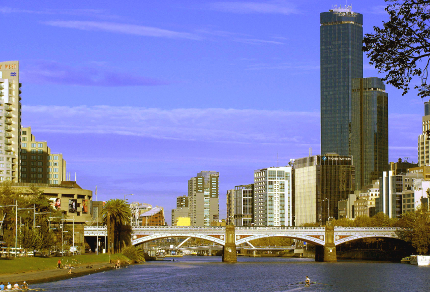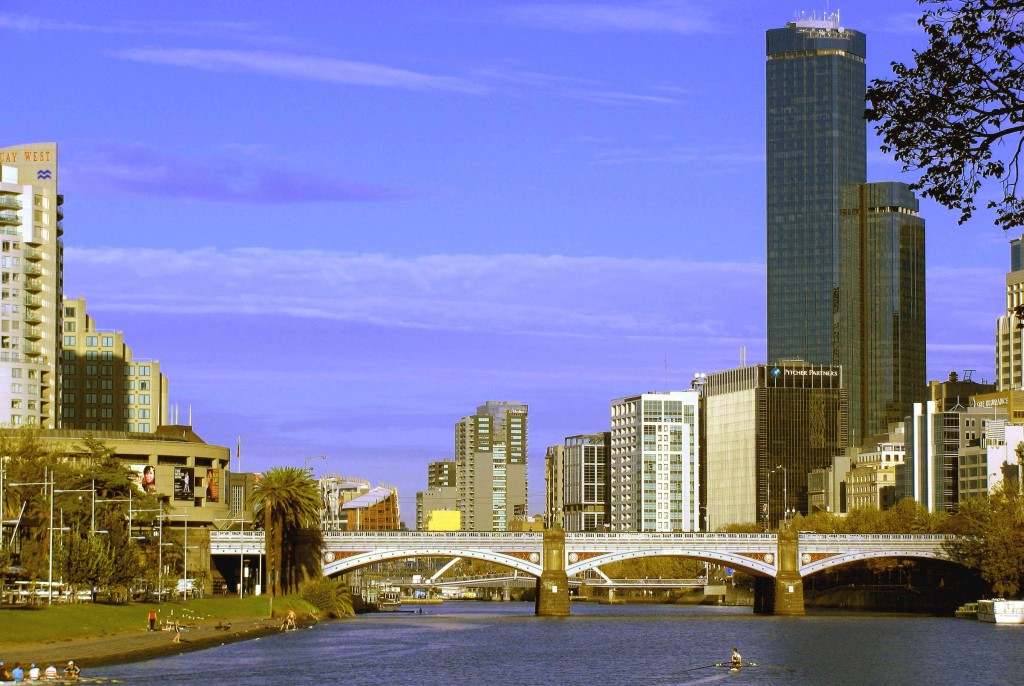
Melbourne and Yarra River, from Birrarung Marr Park (© Vilis Nams)
After leaving the Rydges Melbourne at 7:45 a.m., Vilis and I strolled south on Exhibition Street and crossed a sextet of railway lines into Birrarung Marr Park bordering the Yarra River. Terns wheeled over the water, magpie-larks screeched in riverside trees, and rowers in single sculls, twos, and a four plied the river in fresh breeze and early sun. The sandy river shoreline rustled and crunched beneath the tires of cyclists and feet of runners, and black swans skimmed above water flecked by wind and doused in the reflected browns and dull greens of riverside trees.
We wandered past a vivid and utterly eccentric piece of tile mosaic sculpture near the river shore and heard bells that sounded like wind chimes, xylophone, and tower bells combined. We found the 39 Federation Bells on a platform near the railway overpass. From an interpretive display, we learned that the bells play both classical and contemporary music periodically throughout the day, that they are run by a computer, and that they range in size and pitch from the smallest, which is the size of a hand bell, to the largest, which weighs a tonne.
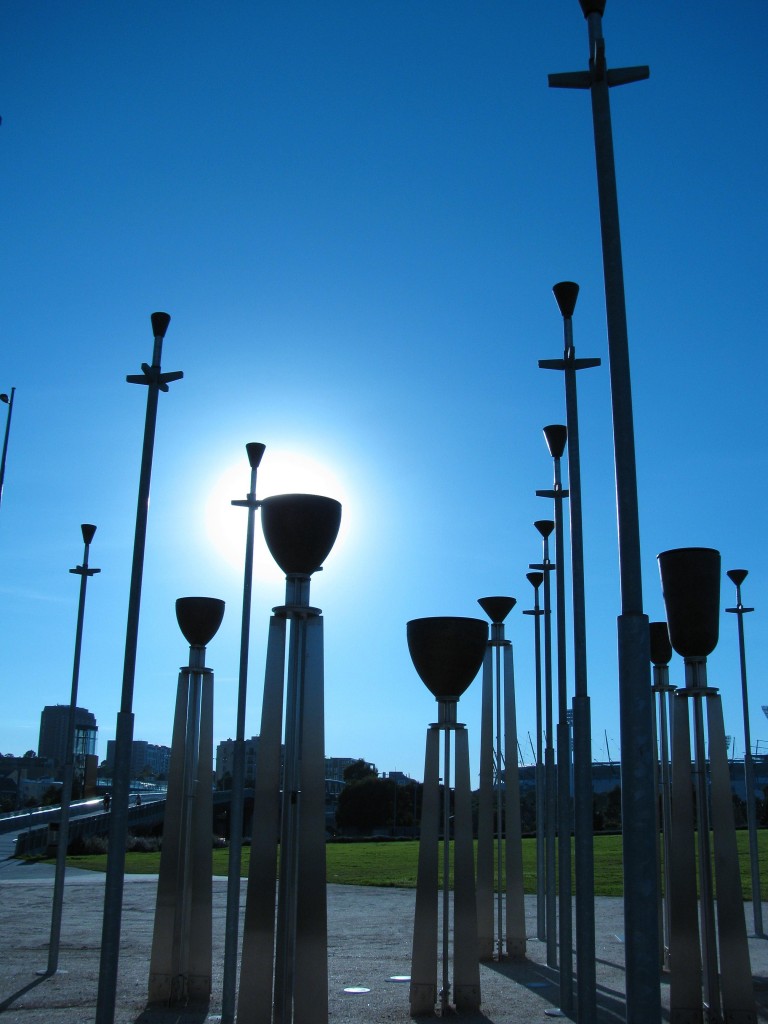
Federation Bells (© Vilis Nams)
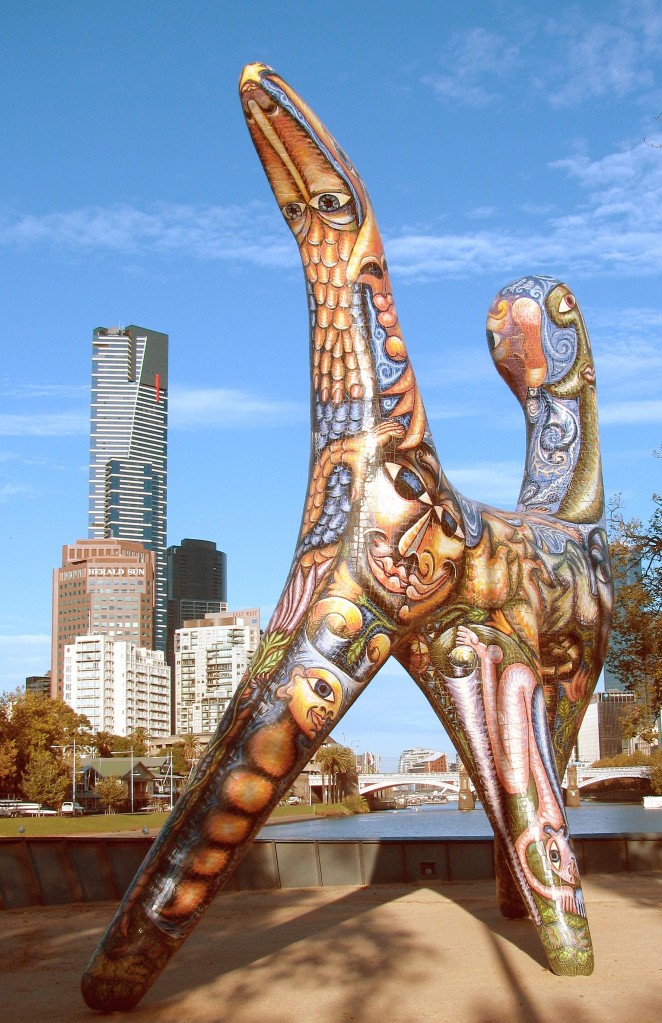
Art in Birrarung Marr Park (© Vilis Nams)
As we walked southeast along the river, rainbow lorikeets squawked and raced overhead, their antics diminished by the scale of the backdrop of city and river. We crossed over a bridge and entered the Royal Botanic Gardens Melbourne, where I spotted an Australasian grebe diving in a pond and black duck preening on a floating log. Bell miners tinkled out clear, single, bell-like notes that Vilis told me were less than a half-tone apart in pitch, and which complemented the Federation Bells (I wondered if they had inspired them). A dusky moorhen foraging on the lawn practically bumped into Vilis’s camera, and it, along with silver gulls, black swans, and a willie wagtail flitting across the pond into a shrub, provided a peaceful contrast to roads crowded with early traffic.
We strolled north past the Sidney Meyer Music Bowl (an outdoor concert venue) and back to the river, passing a block of boat houses belonging to rowing clubs – Melbourne University, Yarra Yarra Boat Club, and Brighton Grammar School, to name a few. A trio of sulphur-crested cockatoos pulled apart globose seed cones of a needle-leaved tree in the nearby Alexandra Gardens, which formed a curved bank of palms, shade trees, and plantings of grasses, flowering shrubs, and xerophytic plants.
Crossing the river on the St. Kilda Road bridge, we strolled into Federation Square and noticed a red bus topped by a huge red brassiere. It was the Berlei bra bus, painted with the slogans ‘The Uplifting Tour of Australia’ and ‘Get Fitted Today.’ The bus had ‘Before’ and ‘After’ doors, with women lined up in front of the ‘Before’ door, ready to be uplifted.
Between the bra display and visitor information centre, a Herald Sun crew aimed cameras and microphones at a runway extending outward from a yellow shelter labeled ‘Unzipped’ and having a notice that there would be a show at 12:30 p.m. Looking at the crowds gathered, Vilis commented, “This seems to be a place where things are happening.”
We caught wind of more happenings as we proceeded across the square to the National Gallery of Victoria. I spotted an advertisement announcing the 2010 Formula One Qantas Australian Grand Prix race scheduled for March 25-28 and banners proclaiming the Melbourne Food and Wine Festival, currently under way. I recalled the upcoming flower and garden show and comedy festival, as well as the L’Oreal fashion show happening in the city now. The thought occurred to me that the city might exist in a perennial state of exhibition.
In the National Gallery of Victoria, which was free to the public (except for special exhibits), the colonial art period gave Vilis and me glimpses into the lives of settlers from painters’ perspectives. Two of my favourites were Nicholas Chevalier’s The Buffalo Ranges and Aby Altson’s Flood Sufferings. In the first, painted in 1864, the artist captured the spiralling, twisting trunks of gum trees and depicted a small clearing with farm animals and settlers as almost glowing in warm hues set against a more sombre background of rugged hills backed by snow-smeared Australian Alps. Flood Sufferings, painted in 1890, depicted two solicitous men carrying a worried woman and a baby on a stretcher out of a flooded house. The interior walls of the house and the clothes worn by the men were painted in muted, earthy hues, while the white bedding and clothes of the woman and baby seemed to radiate light onto the surrounding dull tones, capturing the eye and focussing it on the poignancy of the scene.
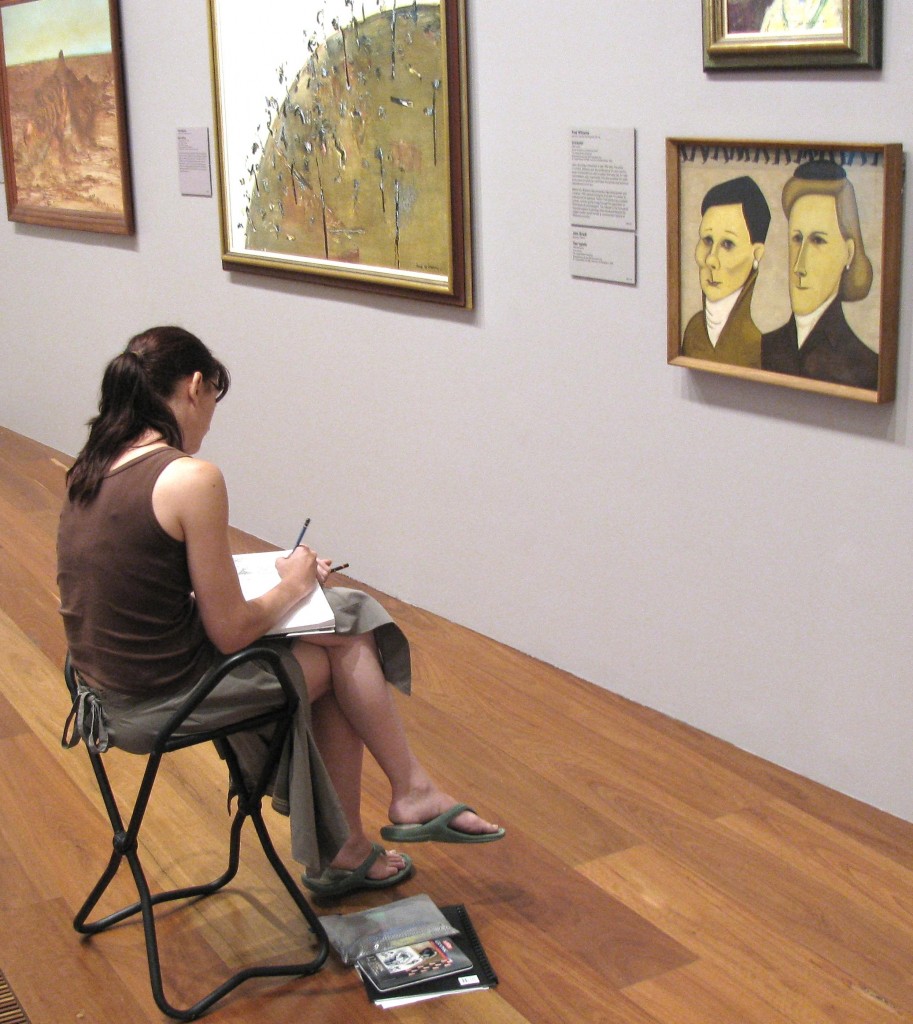
Art Student at National Gallery of Victoria (© Vilis Nams)
A new century brought a new focus in Australian art, the 20th century contemporary pieces appearing far less realistic than those of the colonial period, and more angular and abstract, constructed with experimental colours and styles. Sidney Nolan’s Footballer depicted a somewhat blurry footballer in a jumper of red, orange and white, with spectators’ faces smeared in the background behind him. Dawn Sime’s Solar Components portrayed light fractured into red, blue, gold, with white and green in panels edged with black, like stained glass. The entire collection was vivid and generally jarring to the eye.
Northern Territory aboriginal art painted on bark with earth pigments in shades of red, black, white, and yellow featured human and animal bodies. Other pieces were painted with abstract designs and bright, non-traditional colours – Nyurparya Nelson’s Dingo Creation Story; Cliff Reid’s Creation Story of Coming of Sunlight.
Hungry and having reached art overload threshold, we left the gallery and arrived back at the Federation Square steps just in time to catch a portion of the fashion parade of underwear on the Herald Sun runway, which was part of the L’Oreal International Fashion Festival. The show featured male and female models wearing skimpies made by Jockey, Bonds, Berlei, and Rio, to name a few. Spectators crowded around the runway, and once again, I thought, This city is hopping.
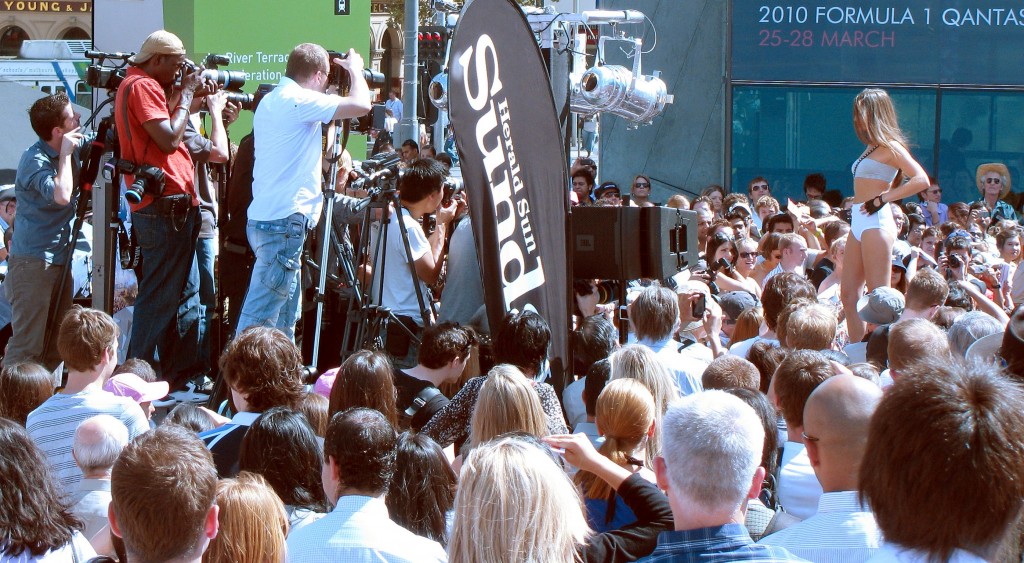
Underwear Fashion Show in Federation Square (© Vilis Nams)

